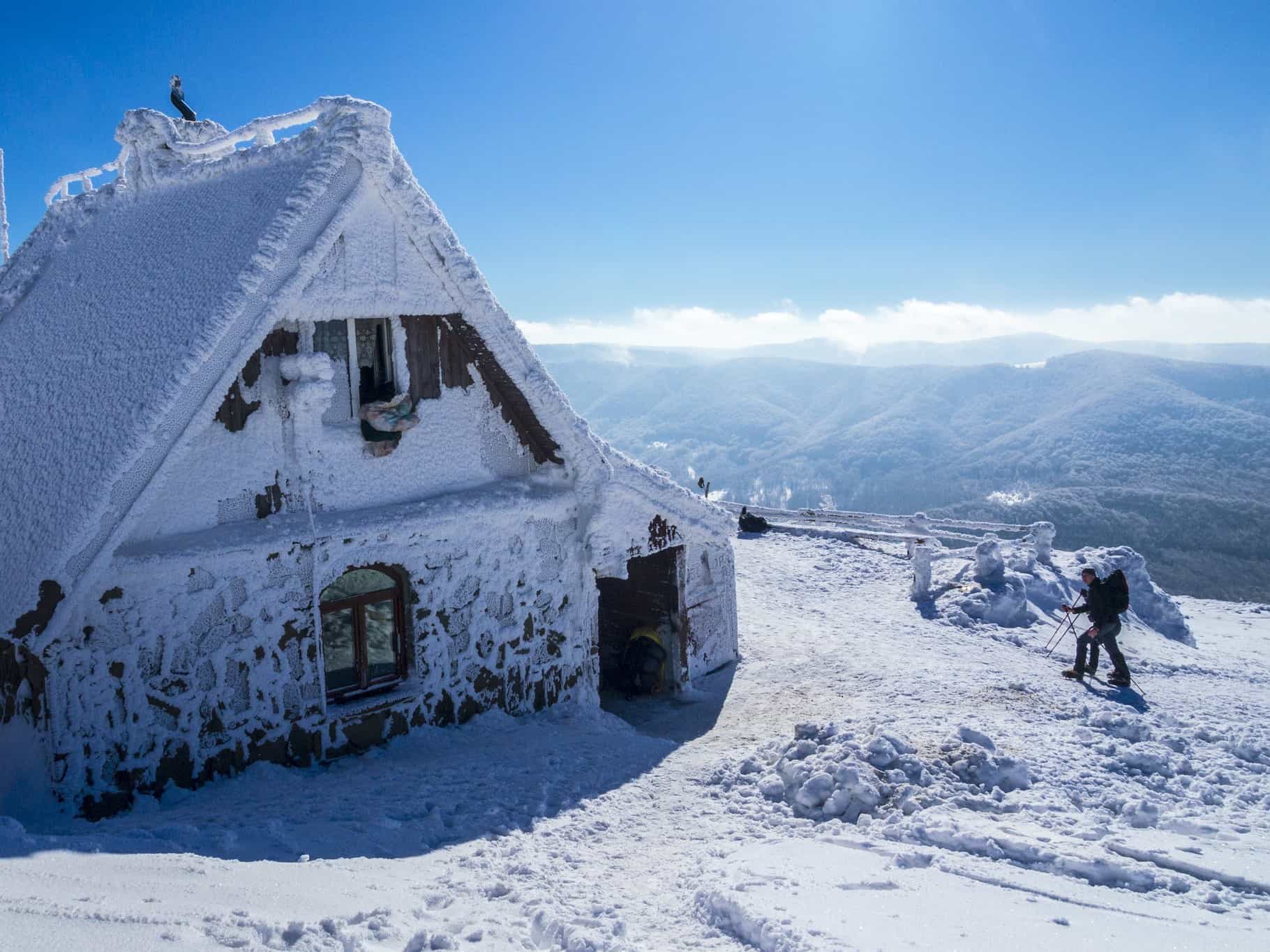Plenty of outdoor enthusiasts have experienced the notion of “freezing to death.” Some of us have even experienced some frighteningly frigid temperatures. But have you ever wondered, in the literal sense, how cold does it have to be to freeze to death? We’ve thoroughly explored the question and have all the information you need to know.
When we think of freezing, we often think of outdoor temperatures. However, literally freezing to death is truly contingent upon your personal body temperature.
How Cold Does It Have to be to Die of Hypothermia
Hypothermia comes in stages, and is the beginning stages that happen long before the body physically freezes. However, pinpointing the exact outside temperature to which one dies of hypothermia is nearly impossible. There are simply too many extenuating factors involved.
Furthermore, it’s not unheard of for people to experience hypothermia in temperatures as high as 30-50 degrees.
Obviously, the risk is much greater in sub-zero temperatures where one would only have literal minutes before death.
However, when your body temperature reaches around 950 Fahrenheit, you’ve entered the beginning stages of hypothermia. Heat is constantly transferring, and this is no less true in cold weather.
For instance, a person’s body loses heat to unprotected surfaces (head, hands, feet), as well as direct contact with colder surfaces (ground).
Additionally, cold air, wind, and rain also directly impact core body temperatures.
So, a person can freeze to death in temperatures ranging from -500 to 500. But, their core temperature is ultimately the deciding factor.
Who is at a Greater Risk
Fortunately, we don’t see temperatures in the negative 300 – 400 degree range very often in this part of the world. That said, there are still approximately 25,000 Americans that die each year from hypothermia (source).
In truth, hypothermia revolves more around a person’s core body temperature rather than outdoor temperatures, so the outside temperatures for those 25,000 people could vary wildly.
However, not surprisingly, the most common instances of hypothermia occur in
- The elderly
- Infants and young children
- Those with prolonged exposure to harsh weather conditions
- Those under the influence of alcohol or drugs
We’ll explore the reasons why throughout this article.

How Long Does It Take to Freeze to Death
Not everyone experiences the cold equally, nor does everyone start with the same body temperature. Therefore, no two people experience hypothermia in the same way within the same timeframe.
In addition, personal factors play an important role as well. Age, negative impacts of drugs/alcohol abuse, certain medications, and physical exhaustion can all diminish cold tolerance.
Thus, personal circumstances are the critical determining factor in the ‘how long’ scenario.
For example, a healthy adult might stave off hypothermia in freezing temperatures, whereas a young child or elderly person might not.
As the body ages, it struggles to regulate temperatures. Likewise, young children lose body heat faster than adults. Factors like fire, shelter, and proper clothing all play important roles in sustainability as well.
Generally speaking, however, when outdoor temperatures hover around -20 degrees, death can come in as few as ten to twenty minutes). Even less, the colder it gets.
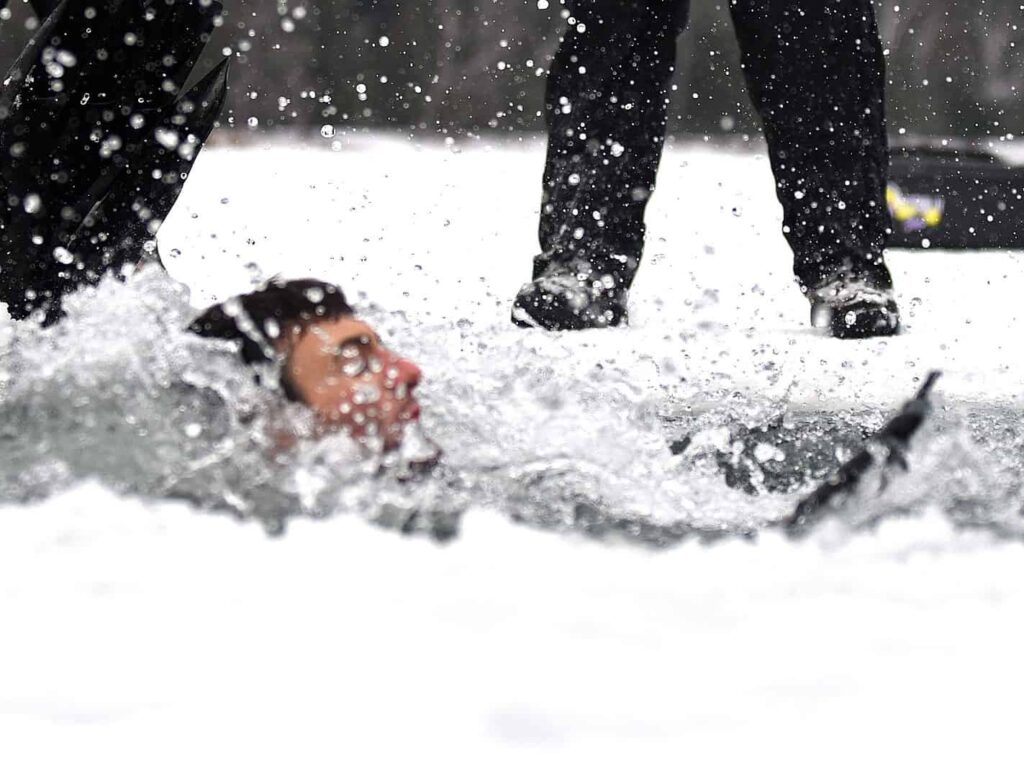
How Long Does It Take to Freeze to Death in Water
Again, it would be almost impossible to delineate a timeline for freezing to death in water. However, we do know that the body loses heat nearly 25 times faster when exposed to water. Because of its higher density, it pulls heat away from the body at a much faster rate.
This means that any water colder than your body temperature can result in rapid heat loss and induce hypothermia.
Surprisingly, that means water doesn’t have to be all that cold. Water temperatures as high as 75° to 80° can pose a risk under the right circumstances. For example, if a cloudy rain storm with high winds rips through.
However, in general, the water temperature and length of time submerged are both defining factors. Additionally, the amount of body fat and soft tissue a person has to insulate their body affects their survival rate.
However, one can logically assume the colder the water, the quicker hypothermia occurs.
For instance, consider the Titanic. History has the water temperatures recorded around the 270 mark where some 1,500 people died.
For some, death was instantaneous. For others, they hung on for up to half an hour.
In fact, some died immediately merely from the shock of the cold water and subsequently suffered cardiac arrest. Conversely, others lasted substantially longer but eventually suffered organ failure and subsequent drowning.
Although, there’s always the occasional anomaly. For example, Anna Bagenholm, a Swedish woman, was submerged in freezing water for a full 80 minutes after a skiing accident (source).
She was retrieved from icy waters with a body temperature of 56.9°F. Yet, nine hours after being rescued from the water, doctors were able to get her heart going again.
Survival certainly didn’t come without loss, however. As a result of long-term exposure to freezing temperatures, Anna suffered all kinds of short and long-term injuries. Most notably, Anna lost full autonomy of her hands.
So, while great gear won’t always save you from slipping beneath an ice sheet, you an certainly prepare for the worst with the right equipment. If you’re heading out in cold temperatures and there’s a chance of water crossings, make sure you read our posts on the Best Waterproof Hiking Boots for Men and Best Waterproof Hiking Boots for Women.
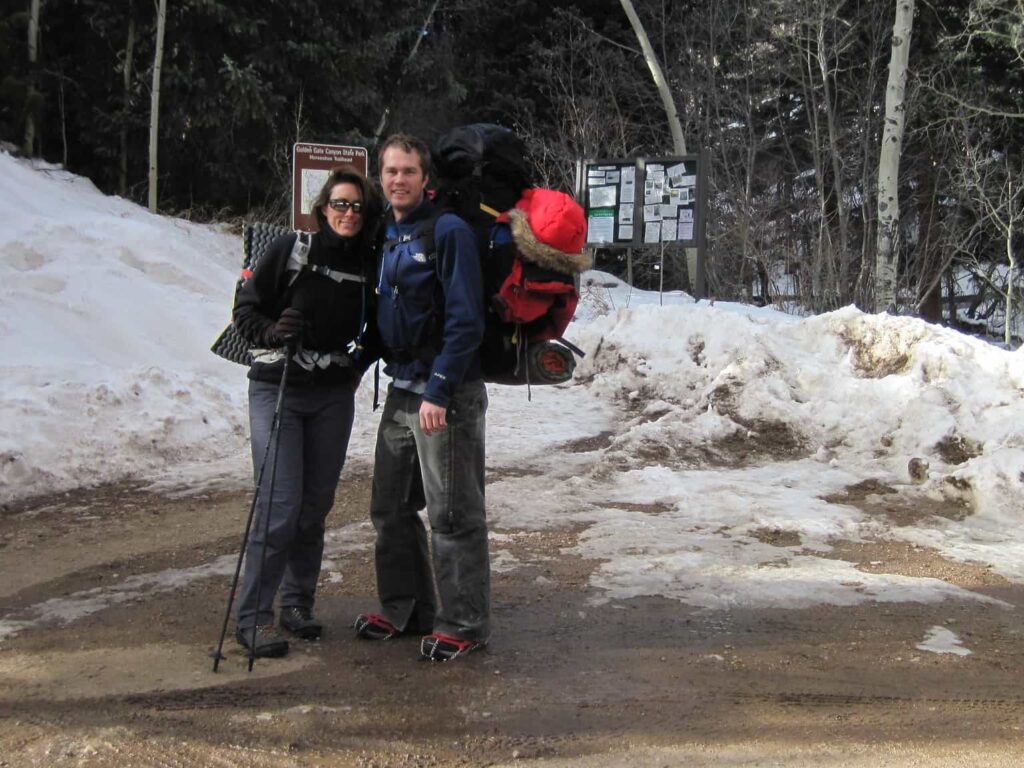
What’s The Lowest Temperature a Human Can Survive
Surviving brutally cold temperatures is no easy feat. Once a person’s core temperature reaches approximately 95° F, hypothermia ensues.
However, there’s no set-in-stone external temperature that consequently results in lowering body temperature to such a degree. As a matter of fact, we know that approximately 90% of hypothermic deaths occur during mild-weathered conditions (source).
As body temperature continues to drop, at around 70°, your organs begin to shut down. Your heart, brain, lungs, kidneys, etc., begin to malfunction.
Additionally, subzero temperatures are difficult to breathe in, posing even more health concerns. When lingering in 10° weather, the cold air alone is more than capable of causing frostbite to the lungs.
But, humans have been surviving -20° to -50° weather for centuries. It’s all about how insulated you keep your body and how long you’re exposed to such horrendous elements.
Plus, we have plenty of affordable cold weather gear to utilize these days. Don’t head out to your winter camp without checking out our article on the Top 5 Best Fleece Jackets for Winter Camping.
Furthermore, we know that Anna (from above) survived with a body temperature slightly less than 60 degrees. So, even if it’s a once-in-a-lifetime anomaly, we know it’s at least physically possible.
Without a doubt, however, the length of time one is exposed to freezing temperatures is directly proportional to their survivability. The longer you’re exposed, the less your chance of survival.
What Is Hypothermia
According to the Mayo Clinic, hypothermia is:
“a medical emergency that occurs when your body loses heat faster than it can produce heat, causing a dangerously low body temperature (source).”
Of course, this ‘medical emergency’ is typical to lengthy exposure in freezing temperatures.
The longer you’re in the frosty temperatures, the more likely your body temperature plummets to 95 degrees or less through a process called vasoconstriction. Vasoconstriction is an important bodily function where your blood vessels narrow pulling blood away from the extremities and toward vital organs.
This is why your fingers and toes become numb so quickly.
Simultaneously, or soon thereafter, the body begins to shiver as its defense mechanism tries to warm itself. However, the muscle cells eventually run out of glucose. When this occurs, without prompt intervention, death is inevitably on the horizon.
As your body temperature continues to drop, a reduction in the blood flow increases the risk of organ failure. Eventually, the body shuts down and goes into shock.
Telltale signs of hypothermia include:
- Uncontrollable trembling
- Confusion or incoherency
- Slurred speech
- Lack of coordination
- Clumsiness
- Dizziness
- Weak pulse
- Extreme drowsiness
- Loss of consciousness
- Chilblains or frostnip
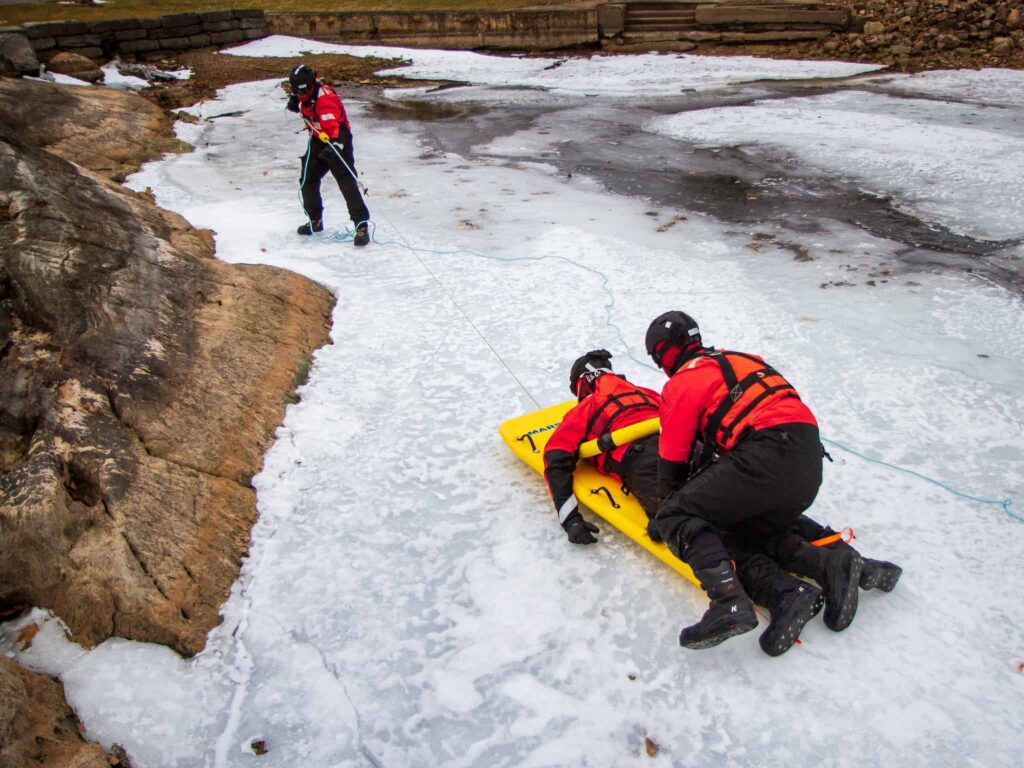
Stages of Hypothermia
Depending on who you ask, there are as many as three to five stages of hypothermia. For knowledge’s sake, we’ve listed and explained all five stages.
Mild hypothermia (90-95°F body temperature)
As previously mentioned, the body enters the first stage of hypothermia as the core temperature approaches 95 degrees. For every degree below 95, your cerebral metabolic rate decreased by 3% to 5%.
You may notice some blueing of the skin as your body pulls blood towards your internal organs.
Consequently, fingers and toes go numb. The pupils become dilated.
Breathing and heart rate quicken, and you may experience some mental confusion.
Internally, the body begins to experience the beginning stages of organ dysfunction.
As body temperature continues to decline and approaches 91 degrees, consciousness becomes an issue, as well as amnesia. Mental confusion impedes executive decision-making.
Moderate hypothermia (82-90°F body temperature)
In this stage, the heart rate and breathing begin to slow. In addition, blood pressure begins to fall.
By 89 degrees, symptoms worsen and mental confusion becomes more significant. Furthermore, victims often experience delirium.
Motor skill impairment and slurred speech are common as reflexes slow and lethargy are prevalent. Some victims of hypothermia even give way to violence.
Ironically, body shivering and trembling cease while the body becomes excessively drowsy. Pupils become enlarged and less responsive.
Around 86-87 degrees, you probably won’t recognize things that were once familiar.
The heart becomes arhythmic and only produces ⅓ of the blood that it once did. The lack of oxygen and metabolic cessation induces visual and auditory hallucinations.
When the body reaches approximately 85 degrees, both paradoxical undressing and terminal burrowing are common. Severe hypothermia causes a primitive instinct for protection that causes humans to burrow like hibernating animals (source).
Additionally, during paradoxical undressing, victims frantically rip off all their clothing. It is believed that this is because of a sudden onset of a heat sensation throughout the body.
Severe hypothermia (75-82°F)
As the body continues to descend in temperature, blood pressure and heart rate continue to drop and organs begin to shut down. The victim loses consciousness and slips into a coma, but still has a notable pulse.
The pupils become fixed and dilated, and breathing becomes labored. Cardiogenic shock and kidney failure are en route.
Without immediate treatment, death is all but certain.
Apparent death (<75° F)
By the time the body reaches 75 degrees, a person is totally non-responsive and appears dead at first sight. They have no pulse, no cardiac output, and no blood flow. There are no physical signs of breathing.
Once the core temperature reaches 70° degrees, organ failure results in permanent damage.
Irreversible hypothermia and death
By 68°, little hope is left for life. However, actually declaring a person dead is quite controversial because of the few miraculous cases of recovery on record. Therefore, declaring death is generally reserved for only experienced physicians.
For instance, to be declared clinically dead, one must be considered “warm and dead.” Therefore, the body must be carefully warmed to at least 89.6° F (32° C) while simultaneously undergoing a whole slew of resuscitative measures.
How to Treat Hypothermia
The most important way to reverse hypothermia is to get warm as fast as you can.
Get out of any wet clothes and into your sleeping bag or a warm blanket.
If you have access to shelter, go inside and warm up by the fire. Otherwise, do your best to light a fire.
At the very least, get out of the wind.
Eating or drinking sugar water can act as a fuel source to produce some heat. Likewise, warm liquids can help raise your body temperature.
Emergency bivvies can also be lifesavers.
If you have any plans to be outdoors during freezing temps make sure you’re prepared. It’s also a good idea to keep a few key items in your car when traveling.
For Stage I and II hypothermia, the best treatments include warming blankets; warm, humidified air; and hot liquids.
For Stages III and beyond, extensive medical intervention is the only hope.
In addition to gradually rewarming the body, sometimes thoracic and/or bladder lavage is required. It may even be necessary to complete a cardiopulmonary bypass.
What Worsens Hypothermia Symptoms
In controlled circumstances, it’s a good idea to limit the amount of time you expose yourself to adverse cold weather conditions. Take the time to periodically warm up inside or by the fire if possible.
Plus, there are situations that can worsen hypothermia symptoms:
- contact with anything wet, unless you’re indoors and warming up
- staying outside too long in wet or frigid temperatures
- shedding clothing, unless it’s creating sweat
- ignoring obvious signs of mild frostbite or chilblains (blistering or red skin rashes
- drinking alcohol or taking recreational drugs
- eating snow
- overexertion to stay warm can make you lose body heat faster and cause sweating
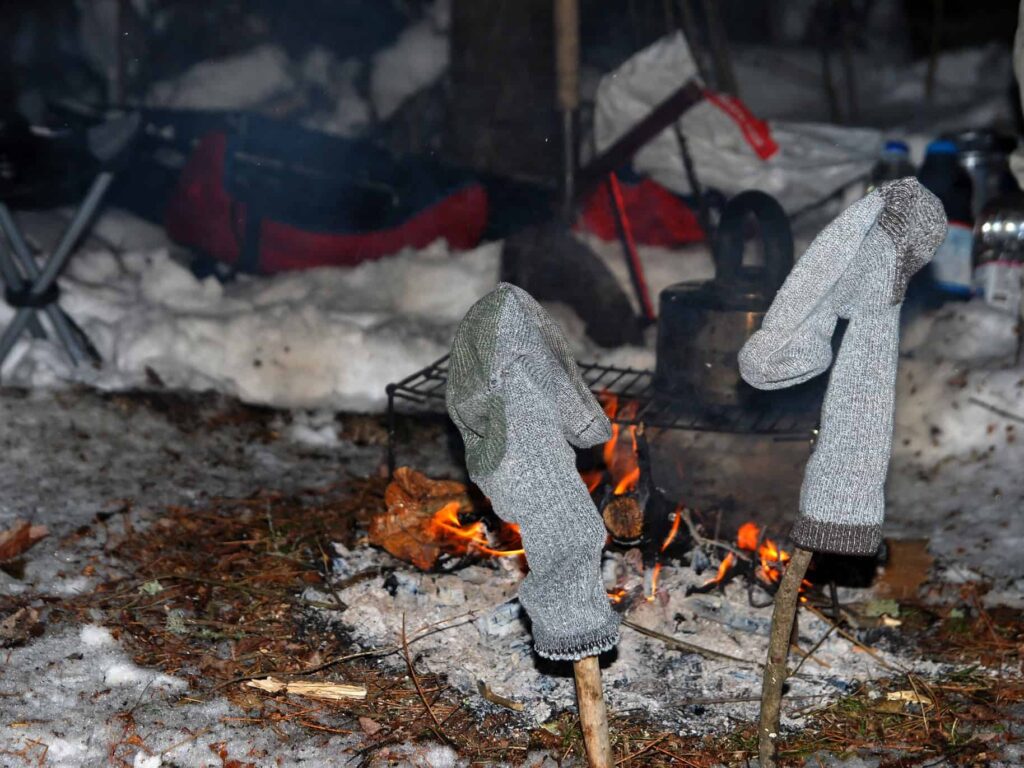
How to Avoid Hypothermia
The best way to avoid hypothermia is to follow the COLD acronym: ‘cover, overexertion, layers, dry.’
1) Cover
Put something on your head, neck, hands, and ankles. Approximately 60% of your body heat gets lost through your head, neck, wrists, and ankles. Hats, gloves, scarves, and leg warmers are a great way to prevent this from happening.
2) Overexertion
While you might think physical exertion would warm you up, overexerting yourself can actually cause you to lose body heat faster. Activities that cause you to sweat result in wet clothing, which is a nemesis to preserving body heat. We also recommend reading our post on How to Keep a Camp Fire Going All Night to help your chances of staying warm.
3) Layers
Base layers should be moisture-wicking. Middle layers should be insulating, while outer layers should be wind- and water-resistant. Additionally, a general rule of thumb is to add a layer of clothing for every 10 degrees below 30.
4) Dry
Wetness is your enemy. Avoid it at all costs, especially hands and feet. Stay bundled. If you get wet, do everything in your power to get dry. As mentioned above, change clothes, don your sleeping bag or emergency bivvy, go inside, or build a fire.
If you’re an avid outdoorsman and spend time in cold weather, there are a few things you should always have as part of your outdoor carry:
- Food/water with magnesium
- Fire starting kit
- First aid kit
- Emergency bivvy or reflective blanket
- Portable knife, shovel, or hatchet
- Flashlight or headlamp
- Hand/feet warmers
- Wet weather gear
- Map, compass, GPS
Additionally, if you’re looking to spend a few nights under the stars in the cold, keep in mind:
- Always check the weather. It’s better to be prepared than surprised.
- Know where you’re going. Make sure your route doesn’t stand a chance of being cut off by snow.
- Make sure someone knows where you’ll be and when you anticipate returning.
- Make sure your gear is rated properly for the snow and freezing temps.
- Have some extra blankets and supplies just in case. You never know when you’ll need an extra layer of warmth.
- Keep your meals simple. Pack winter comfort foods like hot chocolate, apple cider, warm soups, easy stews, oatmeal, etc. Things that are quick and easy to cook and warming to the body are the most desirable food sources.
- Use the “magical foods” whenever you can. Brown rice, cayenne, and ginger are all great ways to regulate your body temperature. Capsaicin causes a thermogenic reaction; brown rice raises your body temperature through energy conversion, and ginger constricts blood vessels helping you feel warmer.
- Avoid alcohol as it dilates your blood vessels, which negates your body’s natural defense mechanism.
Stay Safe!
The human body is amazing; we can do all sorts of things that seem miraculous. However, when it comes to the cold, we’d succumb without proper clothes and heat sources. Plus, it doesn’t even have to be freezing out for the body to experience hypothermia. Even a low temperature day can be a risk if a person is soaking wet and unprotected from whipping winds.
With adequate knowledge, solid preparation, and a few built-in safety measures, you can still enjoy camping and hiking throughout the winter months. Staying warm and dry and ensuring access to adequate heat allows you to experience the great outdoors all year long.
About the Author
Sarah Sampsell
How Cold Does it Have to be to Freeze to Death, Title Image Credit: Mateusz Gazda | (source) | Attribution-NoDerivs 2.0 Generic (CC BY-ND 2.0) — reduced file size and image
How Cold Does it Have to be to Freeze to Death, Image 1 Credit: UNC – CFC – USFK | (source) | Attribution 2.0 Generic (CC BY 2.0) — reduced file size and image
Image 2 Credit, How Cold Does it Have to be to Freeze to Death: The National Guard | (source) | Attribution 2.0 Generic (CC BY 2.0) — reduced file size and image
How Cold Does it Have to be to Freeze to Death, Image 3 Credit: Robert Tadlock | (source) | Attribution 2.0 Generic (CC BY 2.0) — reduced file size and image
How Cold Does it Have to be to Freeze to Death, Image 4 Credit: Fort Drum and 10th Mountain Division (LI) | (source) | Public Domain Mark 1.0 — reduced file size and image
Image 5 Credit, How Cold Does it Have to be to Freeze to Death: Jenny Salita | (source) | Attribution-NoDerivs 2.0 Generic (CC BY-ND 2.0) — reduced file size and image

